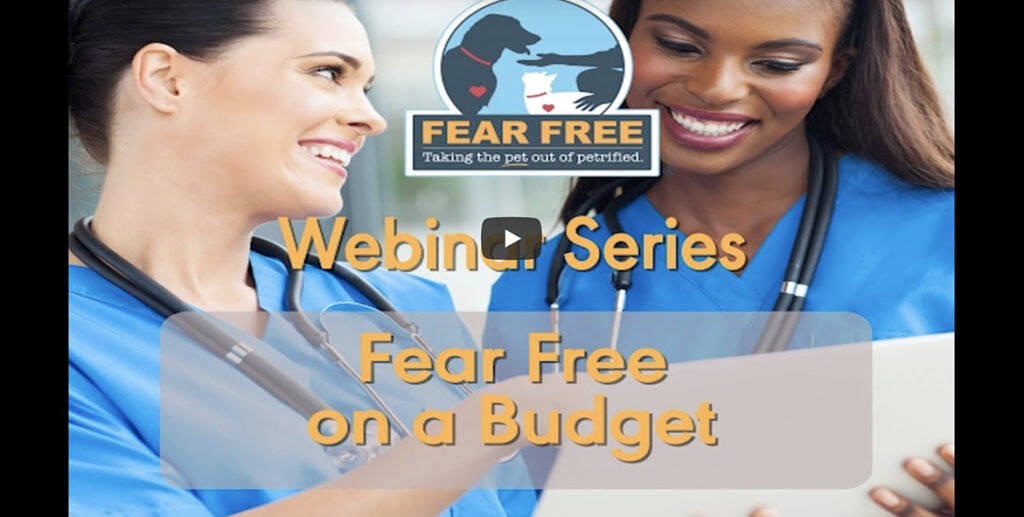
Fear Free on a Budget
Listen to Practice Certification Manager Dr. Rachel Abrams for tips on how many Practice Certification standards can be met with little to no strain on your budget.

Fear Free on a Budget
Listen to Practice Certification Manager Dr. Rachel Abrams for tips on how many Practice Certification standards can be met with little to no strain on your budget.

There are lots of ways to make visits Fear Free when there is time for you and the client to discuss the animal’s FAS, add pre-visit pharmaceuticals, take your time, and even postpone non-essential procedures. But, what about in an emergency or critical care situation? Even though the procedures are not elective, there are still things you can do to help ease patients’ FAS.
This course, approved for 1 RACE CE hour, was written by Kenichiro Yagi, MS, RVT, VTS (ECC, SAIM)
There are four lessons in this course.
Lesson 1: Challenges in Emergency and Critical Care
Lesson 2: Why is Fear Free Important for ECC Patients?
Lesson 3: Solutions for Patients in the Emergency Room
Lesson 4: Solutions for Patients in Critical Care
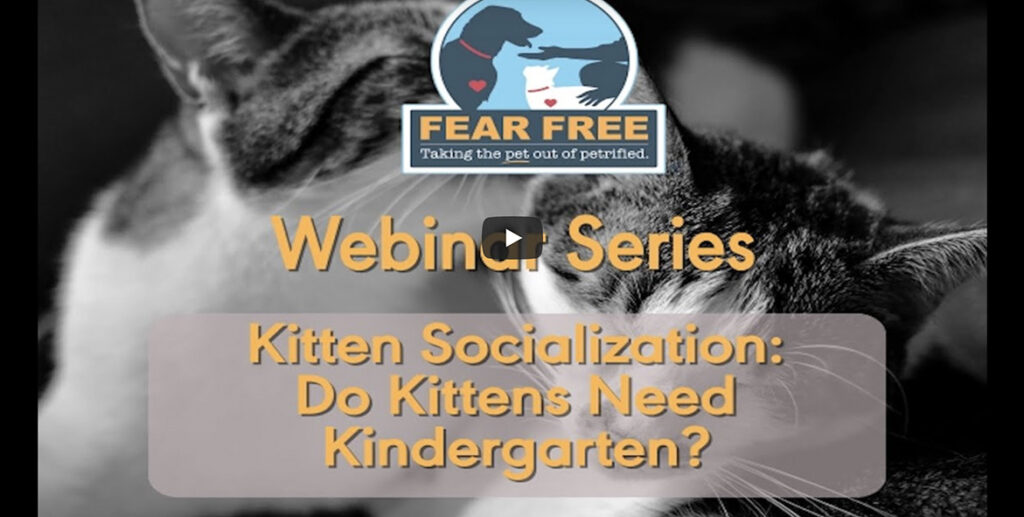
Kitten Socialization: Do Kittens Need Kindergarten?
Getting kittens off to a good start lays the foundation for an adulthood free of fear, anxiety, and stress. But just what does a “good start” mean? What exactly is kitten socialization? What role does genetics play, and what should we be doing for our kitten patients? In this webinar, Dr. Krista Sirois answers these questions and discuss the benefits of establishing a Kitty Kindergarten program in your clinic for your patients, pet parents, and your team.
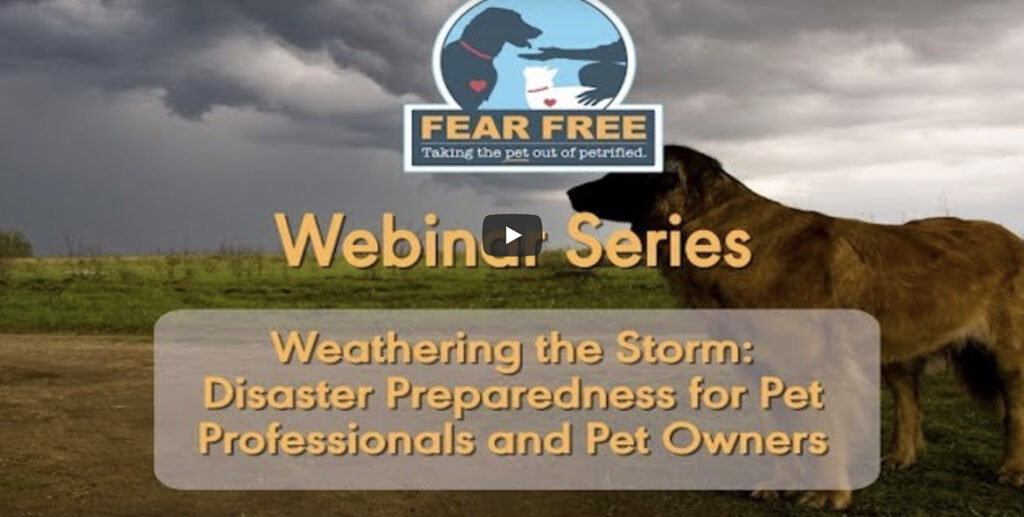
Weathering the Storm: Disaster Preparedness for Pet Professionals and Pet Owners
If a disaster hit your community tomorrow, would you and your business be prepared? How about the animals that live in your home or community? It is never too late to begin planning for a disaster or business disruption. In this webinar, representatives from State Farm talk about disaster preparedness, having a business continuity plan, and what insurance does and doesn’t cover. Whether you are a pet professional or a pet parent, this webinar can help you prepare for and recover from the unexpected.
Sponsored by State Farm.
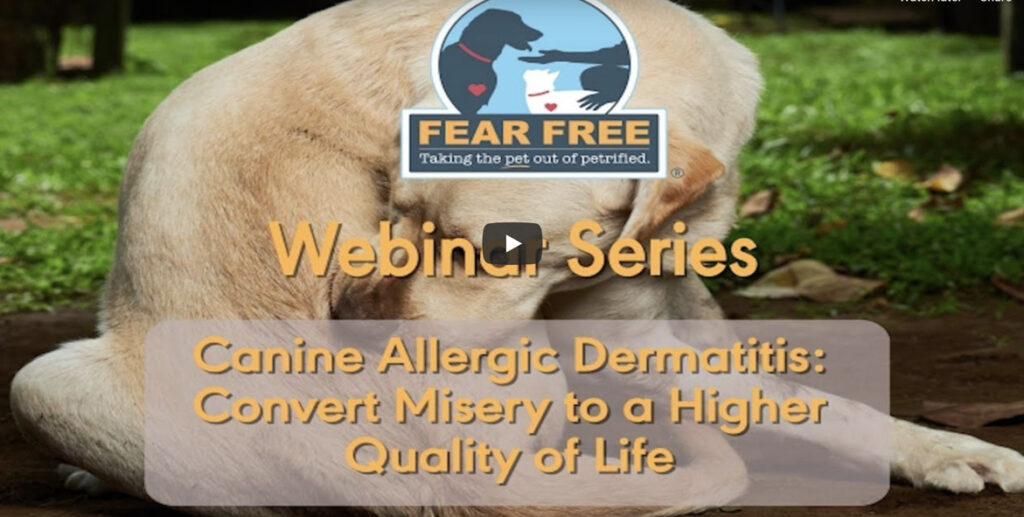
Canine Allergic Dermatitis: Convert Misery to a Higher Quality of Life
What better way to decrease stress and anxiety than by increasing quality of life? In this webinar, Dana Liska, DVM, DACVD, discusses canine allergic dermatitis and the stress chronic disease causes for dogs, their owners, and the veterinarians caring for them. She also shares tips for decreasing caregiver burden and improve quality of life for everyone involved in the veterinarian-client-patient relationship.
Sponsored by Zoetis.
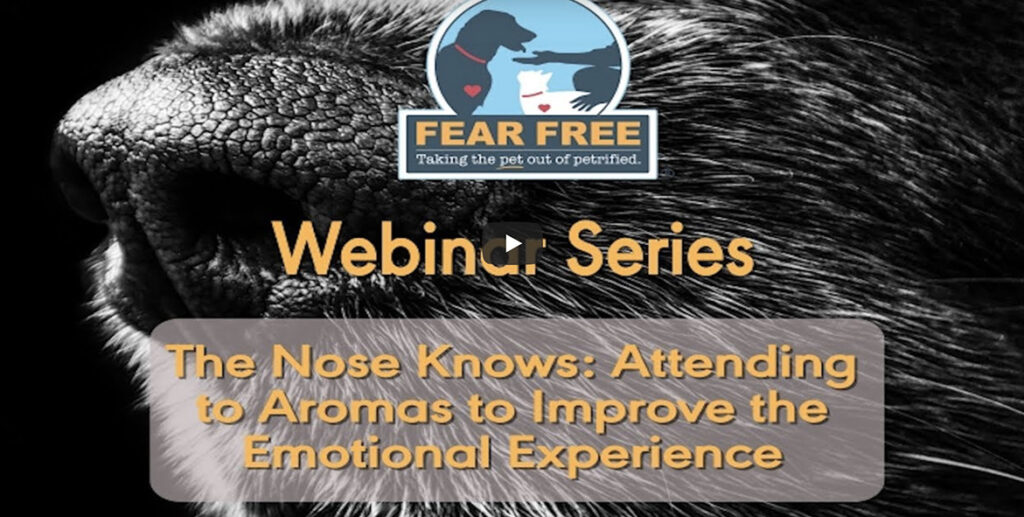
The Nose Knows: Attending to Aromas to Improve the Emotional Experience
Dogs and cats are known for their remarkable olfactory capabilities. Olfactory experiences and associations can trigger profound emotional responses. In this webinar, Jacqueline Neilson, DVM, DACVB, explores how to manage odors during the veterinary visit to minimize patient fear, anxiety, and stress.
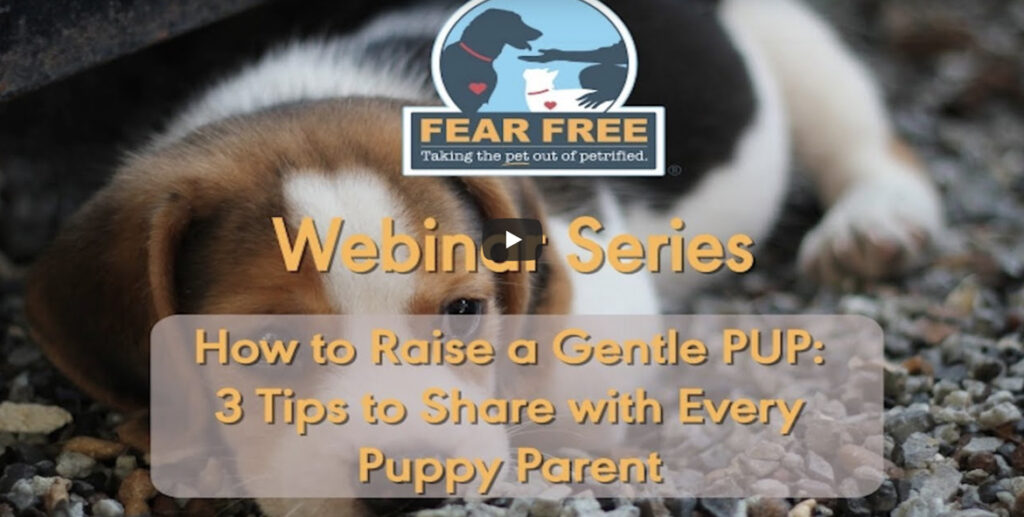
How to Raise a Gentle PUP: 3 Tips to Share with Every Puppy Parent
“PUP” isn’t just short for “puppy.” It stands for three core puppy-raising principles: Praise, Unflappable, and Prevention.
In this webinar, Jacqueline Neilson, DVM, DACVB, covers how to:
Sponsored by Elanco.

1. Parasites disrupt the pet owner-pet bond.
No pet owner wants to see the dreaded “rice” on their dog’s rear, or learn their dog has been shedding eggs from intestinal parasites and contaminating their yard. Intestinal parasites aren’t just stressful for pet owners, but for pets, too. An indoor dog could suddenly be relegated to the outdoors or confined to a single room – all while a frantic pet owner tries to reach their veterinarian after hours. Dogs are intelligent creatures, but that doesn’t mean they will understand why their owner is suddenly distant, worried or disgusted. The bottom line: Parasitic infections can undermine efforts to create a warm, inviting, Fear Free home for a pet.
2. Intestinal parasite prevalence rates are rising.
The average number of heartworm-positive dogs per clinic increased by 21.7 percent in a 2017 survey conducted by the American Heartworm Society.1 While pet owners may recognize the importance of protecting against heartworm, they might not realize the threats posed by intestinal parasites as well. Along with the increasing threat of heartworm, prevalence rates of intestinal parasites are also on the rise. In shelter dogs:
3. Pets are out and about (and exposed) more than ever.
Dog parks are prime areas for the spread of parasites like hookworm, whipworm and roundworm. In a pilot study conducted across the Dallas-Fort Worth area, 80 percent of sampled dog parks had at least one dog test positive for intestinal parasites.4 If a client frequents dog parks or other areas with lots of dogs, they should know that it increases their dog’s risk of picking up a parasitic infection.
4. Shelter dogs may increase parasite prevalence in your area.
Did you know nearly two thirds of animal shelters and rescue organizations do not test, treat or provide heartworm prevention before transporting dogs? From 2014 to 2017 shelters imported 114,000 dogs to Colorado, and during that same time period Colorado saw a 67.5 percent increase in heartworm prevalence. Even if you practice in an area with historically low parasite prevalence, shelter dog relocation may contribute to a higher local risk of parasitic disease for your clients.5
5. Owners and their families are at risk, too.
Pet owners often don’t realize that zoonotic disease transmission is a real threat to their families, especially young children.6 If clients question the necessity of intestinal parasite protection, explain that roundworm eggs can remain in an environment for years6 — leaving pets and human family members at risk long after the problem was thought to be “over.” Even walking around barefoot in their own yard could be a risk, because infective hookworm larvae can penetrate human skin to spread zoonotic disease.7
Regardless of the many Fear Free reasons to protect against intestinal parasites, educating pet owners on the risks of these “hidden” parasites can be a challenge. Using the conversation starters above can help support a recommendation for heartworm prevention that also protects against hookworm, roundworm, whipworm, and tapeworm, as well as potentially increasing compliance. After all, a client who understands the value of intestinal parasite protection for their pet is that much more likely to administer it.
References
 This post is brought to you by our sponsor, Elanco, the makers of Credelio® (lotilaner) and
This post is brought to you by our sponsor, Elanco, the makers of Credelio® (lotilaner) andCredelio kills adult fleas, treats flea infestations (Ctenocephalides felis) and treats and controls tick infestations [Amblyomma americanum (lone star tick), Dermacentor variabilis (American dog tick), Ixodes scapularis (black-legged tick) and Rhipicephalus sanguineus (brown dog tick)] for one month in dogs and puppies 8 weeks or older and 4.4 pounds or more.
IMPORTANT SAFETY INFORMATION FOR CREDELIO
The safe use of Credelio in breeding, pregnant or lactating dogs has not been evaluated. Use with caution in dogs with a history of seizures. The most frequently reported adverse reactions are weight loss, elevated blood urea nitrogen, increased urination, and diarrhea. Please see full Credelio product information for complete safety information or contact your veterinarian.
INDICATIONS FOR INTERCEPTOR PLUS
Interceptor Plus prevents heartworm disease (D. immitis) and treats and controls adult hookworm (A. caninum), roundworm (T. canis, T. leonina), whipworm (T. vulpis) and tapeworm infections (T. pisiformis, E. multilocularis, E. granulosus and D. caninum) in dogs and puppies 6 weeks or older and 2 pounds or greater.
IMPORTANT SAFETY INFORMATION FOR INTERCEPTOR PLUS
Treatment with fewer than 6 monthly doses after the last exposure to mosquitoes may not provide complete heartworm prevention. Prior to administration of Interceptor Plus (milbemycin oxime/praziquantel), dogs should be tested for existing heartworm infections. The safety of Interceptor Plus has not been evaluated in dogs used for breeding or in lactating females. The following adverse reactions have been reported in dogs after administration of milbemycin oxime or praziquantel: vomiting, diarrhea, depression/lethargy, ataxia, anorexia, convulsions, weakness, and salivation. Please see full Interceptor Plus product information for complete safety information or contact your veterinarian
Credelio, Interceptor, Elanco and the diagonal bar logo are trademarks of Elanco or its affiliates.
© 2019 Elanco. PM-US-19-1483
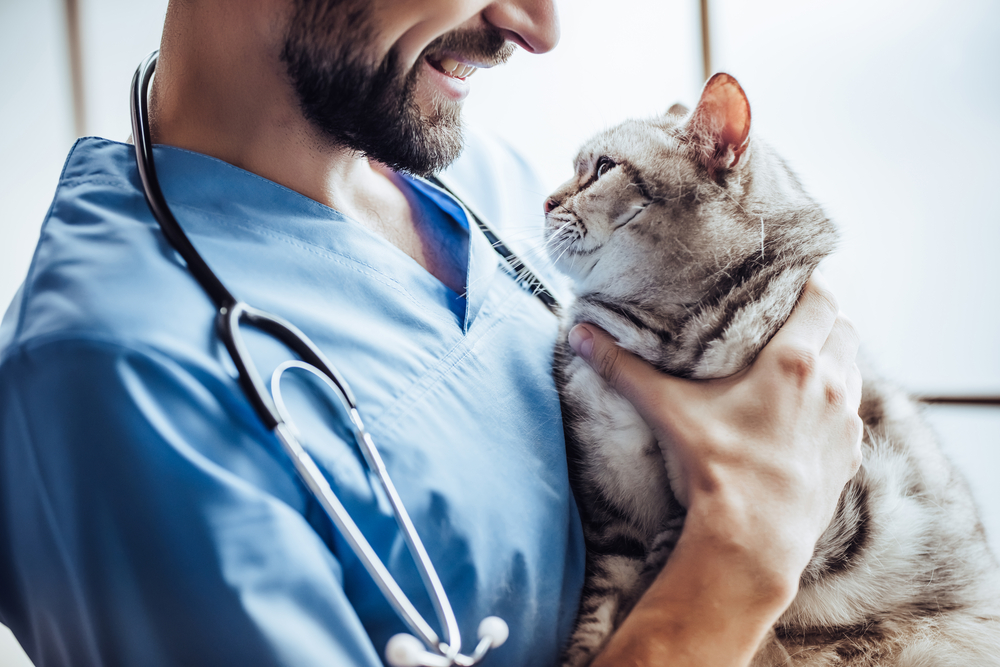
 My cat Cleo is nearly 17 and receives sub-q fluids regularly at home. She used to grumble and try to get away but once I started Fear Free, I began giving her favorite crunchy treats before, during, and after administering fluids. Now she purrs through the whole procedure, and any time I approach the spot in the house where we do fluids, she walks up for “crunchie time.” I’ve been able to switch back to a larger needle because she doesn’t notice the poke while snacking, which makes administration faster, too.
My cat Cleo is nearly 17 and receives sub-q fluids regularly at home. She used to grumble and try to get away but once I started Fear Free, I began giving her favorite crunchy treats before, during, and after administering fluids. Now she purrs through the whole procedure, and any time I approach the spot in the house where we do fluids, she walks up for “crunchie time.” I’ve been able to switch back to a larger needle because she doesn’t notice the poke while snacking, which makes administration faster, too.
Kate Regehr, Douglas College, New Westminster, British Columbia, Canada
Last year, Moose came into our clinic with lots of anxiety and fear, so much that we were unable to properly perform a physical exam or collect blood from him. This year, Moose had trazodone on board and his visit went fantastic. Our team was able to get him on the scale, perform a full exam, and collect blood. Moose’s mom was so happy and relieved to know that Moose could have a Fear Free veterinary visit where Moose can feel safe.
Jessica Decock, Georgian Bay Veterinary Hospital and Mobile Services, Perkinsfield, Ontario, Canada
 Chewy had a lot of fear and anxiety at the veterinary clinic, causing her to behave aggressively and making it difficult to give her the care she needed. While training her, I observed various signs of pain, which were most likely adding to her anxiety. I alerted her caregiver to my observations so she could better assess and monitor her dog and update her veterinarian. Chewy and her caregiver had previously had negative and traumatic experiences at a veterinary clinic so I referred them to Keystone Veterinary Clinic, which has Fear Free Certified Professionals who created a handling plan to enable Chewy to have a thorough exam, radiographs, and other diagnostics in a safe and low-stress manner. I also worked with the owner to begin muzzle training. The combination of appropriate scheduling, handling, and sedation, Chewy was able to receive the diagnostics and treatment she needed.
Chewy had a lot of fear and anxiety at the veterinary clinic, causing her to behave aggressively and making it difficult to give her the care she needed. While training her, I observed various signs of pain, which were most likely adding to her anxiety. I alerted her caregiver to my observations so she could better assess and monitor her dog and update her veterinarian. Chewy and her caregiver had previously had negative and traumatic experiences at a veterinary clinic so I referred them to Keystone Veterinary Clinic, which has Fear Free Certified Professionals who created a handling plan to enable Chewy to have a thorough exam, radiographs, and other diagnostics in a safe and low-stress manner. I also worked with the owner to begin muzzle training. The combination of appropriate scheduling, handling, and sedation, Chewy was able to receive the diagnostics and treatment she needed.
Tabitha Kucera, RVT, CCBC, KPA-CTP, Positively Pawsitive, Cleveland, Ohio
 Gus had developed severe resource guarding of his food and water bowls, as well as fear and anxiety regarding being touched and having his gear put on and taken off. As a result, he snapped at and bit a walker. We worked closely with his owners and utilized Fear Free strategies and positive reinforcement training to get Gus comfortable with having strangers in the home. We were eventually able to find a solution that allowed Gus to be comfortable having walkers touch and refill his water bowl and approach his food bowl without any signs of resource guarding or fear, anxiety, and stress. Now Gus happily greets his walker at the door, demands affection, and has no issues on his walk or in his home.
Gus had developed severe resource guarding of his food and water bowls, as well as fear and anxiety regarding being touched and having his gear put on and taken off. As a result, he snapped at and bit a walker. We worked closely with his owners and utilized Fear Free strategies and positive reinforcement training to get Gus comfortable with having strangers in the home. We were eventually able to find a solution that allowed Gus to be comfortable having walkers touch and refill his water bowl and approach his food bowl without any signs of resource guarding or fear, anxiety, and stress. Now Gus happily greets his walker at the door, demands affection, and has no issues on his walk or in his home.
Katie Pape, Windy City Paws, Chicago, Illinois
Yesterday, we had a new client come in for a vaccine appointment for her new blue merle Corgi puppy, which she had picked up the previous day. In the lobby, the pup was quiet and at first glance appeared to be coping well, but once in the exam room, I noticed she was scared and only wanted to stay between mom’s legs. We needed to vaccinate her so she could attend the puppy kindergarten class our behaviorist runs. We were able to get an oral bordetella vaccine in her, luring with baby food. When we attempted to poke with the needle for the other vaccination, though, she cried. We tried to warm her up to us so we would be able to get the vaccination in her. She escalated in the room and turned and growled. We then decided to abort mission. We did not want to ruin her experience at the veterinarian, especially since this was her first time here and she was a baby. We prescribed gabapentin and planned to have her come in the next day, early in the morning, to give her a better experience. Luckily, mom and dad were 100 percent on board with this. They came in the next morning and our front desk staff directed them to a room right away. When we walked in with the vaccine, she was asleep on the table. Dad said she was very sleepy. I grabbed a cup of Braunschweiger and fed her a small piece of it. She eagerly ate it but didn’t move her body. We desensitized and performed gradient of touch and she was fully distracted by the yummy treats. We gave her the vaccine and she never stopped eating and did not even notice the poke. We were thrilled!! Yay for pre-visit medications!
Maria Marano, The Ohio State University Veterinary Medical Center Community Practice, Columbus, Ohio
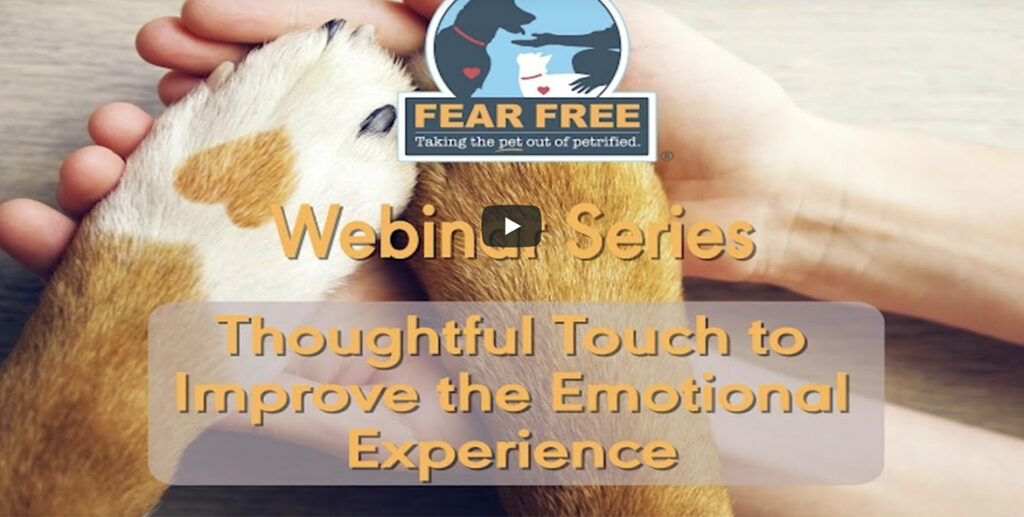
Thoughtful Touch to Improve the Emotional Experience
How we handle our patients and their tactile experience in our practices can impact their comfort and welfare during the veterinary visit. In this webinar, Jacqueline Neilson, DVM, DACVB, covers best practices to ensure that every physical interaction in your practice offers the best possible pet experience.